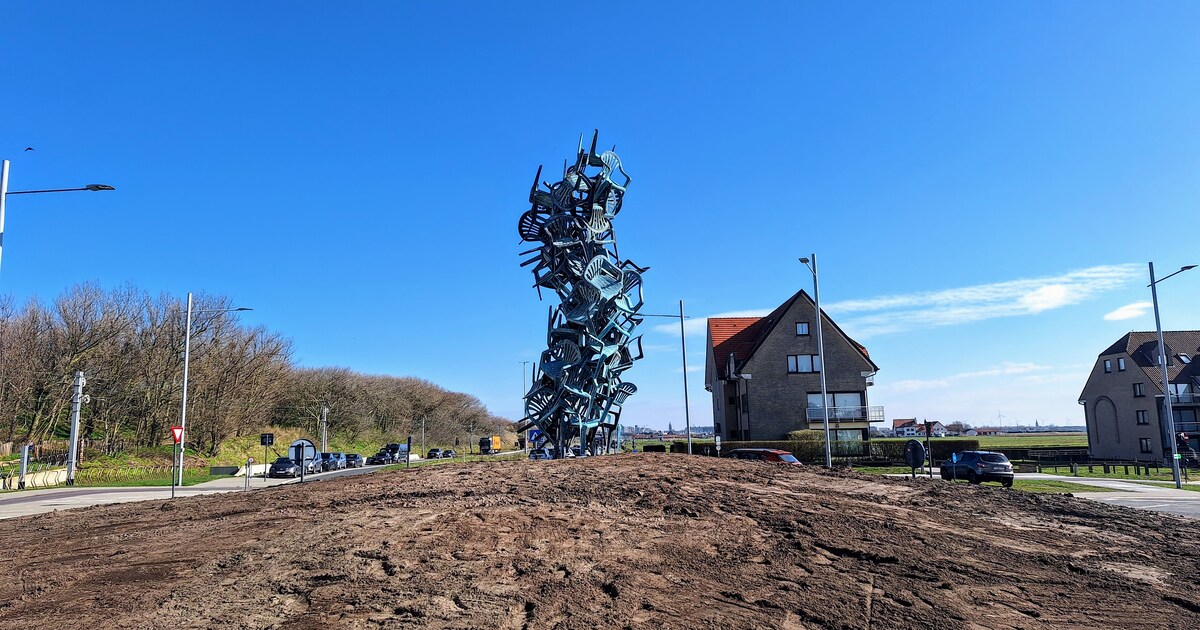Philip Van Cauteren: “I haven't seen it in real life yet. But based on the pictures, it seems to be a fairly classic bronze sculpture. As far as I'm concerned, there's nothing shocking about it. It also has a valuable message: the stacked chairs represent a culture of neglect.” In this sense, I think it is a successful work of art.
However, the artwork receives strikingly negative feedback. For example, the phrase “this belongs in a container garden” could be read on social media. Were you surprised by that?
“Yes, I am somewhat surprised by the panic surrounding this work. If you were to tour the various roundabouts in Flanders, you would see many sculptures and other works of art that would be even more shocking.
“On the other hand, I'm always relieved when I find that art disturbs people. As long as art disturbs people, makes them question their judgment of their tastes, or disappoints them, there is hope. This proves that art can still move something. It will be more disturbing If there is one hundred percent consensus about a particular work of art.
“People often expect that art should conform to their expectations. But good art subverts those expectations. If a work of art succeeds in waking people up and stirring something, as is the case here, that is a good sign.”
Do you notice how people are becoming increasingly critical of art that doesn't conform to those expectations?
“There is, of course, a difference between exhibitions in a museum and art in public spaces. By purchasing an admission ticket to a museum, people declare their willingness to expose themselves to something new and unexpected. But in public spaces everyone can connect with art. And in the uncertain and vulnerable times in which we live , this art may become a got head more quickly.
“I notice that the authority of artists is increasingly being called into question. When we go to the doctor, most people take what they prescribe without question. But in Beaufort, which is equally an institution, that authority is being called into question much more quickly.”
“You must not forget that there is a lot of skill and experience in such a work of art. This is the result of years of practice and technique, a lot of trial and error, and a great knowledge of artistic traditions. This work contains references to the works of the sculptor Constantin Branquë, and to the accumulations of the French-American artist Armaan: But this is overlooked by many people, so it is easier to leave a job like this.
The municipality of De Haan and the province together paid €200,000 for this artwork. Some critics, including Philipp DeWenter and Dries van Langenhove, essentially question whether the money was well spent.
“It is understandable that there is a critical view of how we handle money. But if you add up all the investments in art and culture, it represents a marginal amount in the entire budget. It should actually be the sum.
“In this regard, we need to look at the bigger picture more often. What do we remember about the 19th century? It is not exactly the savings or electoral choices in each period of government. What remains with us are the works of great artists, the important books that were written, the buildings “Which still exists today. Art can also help us look at events like the war in Ukraine or Gaza in a different way. We need that more than anything else today.”
What do we remember about the nineteenth century? Not exactly savings or electoral choices in each government period, but works of art.
Philip Van Cauteren








More Stories
Actor Alain Delon’s dog was not given an injection to be buried together: what are our rules?
VUB awards honorary doctorate to Guy Mortier
In these ways, “Alien: Romulus” is connected to “Alien” and “Prometheus.”